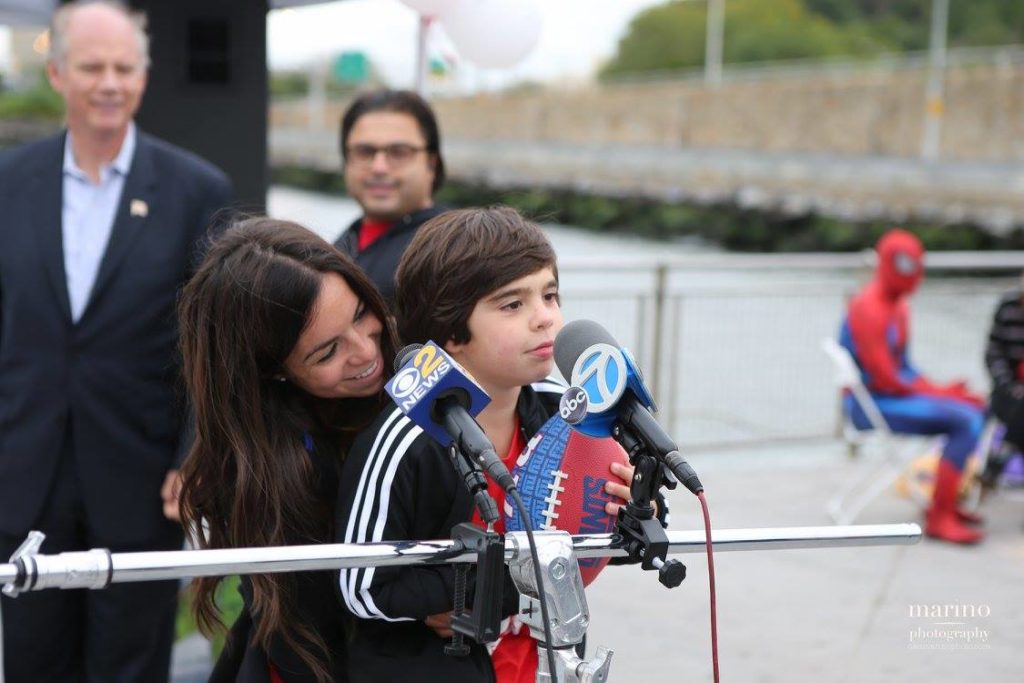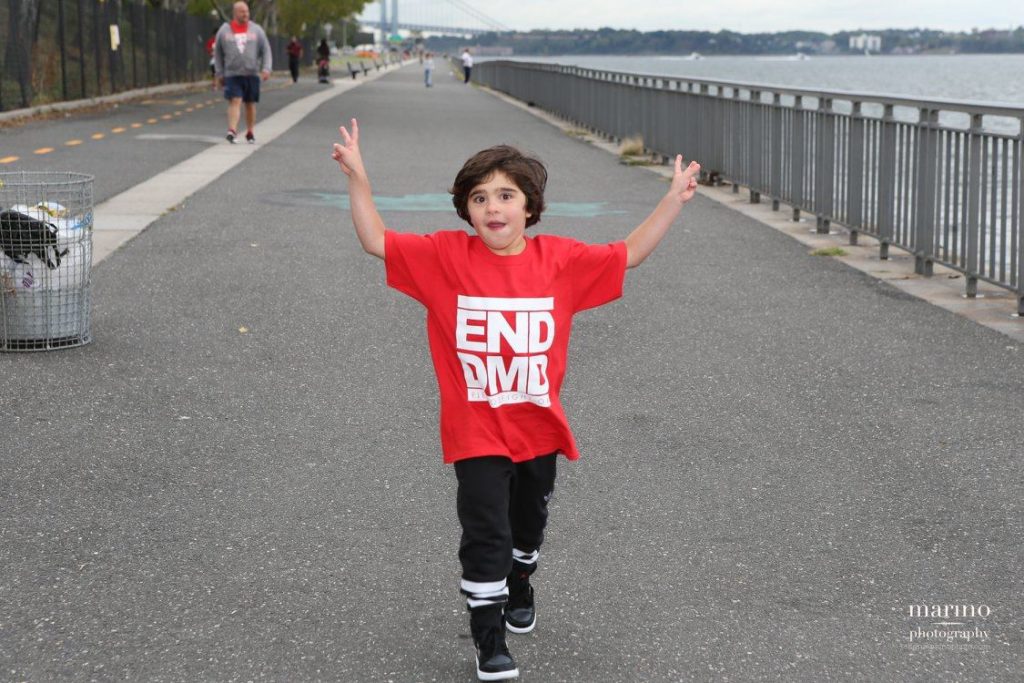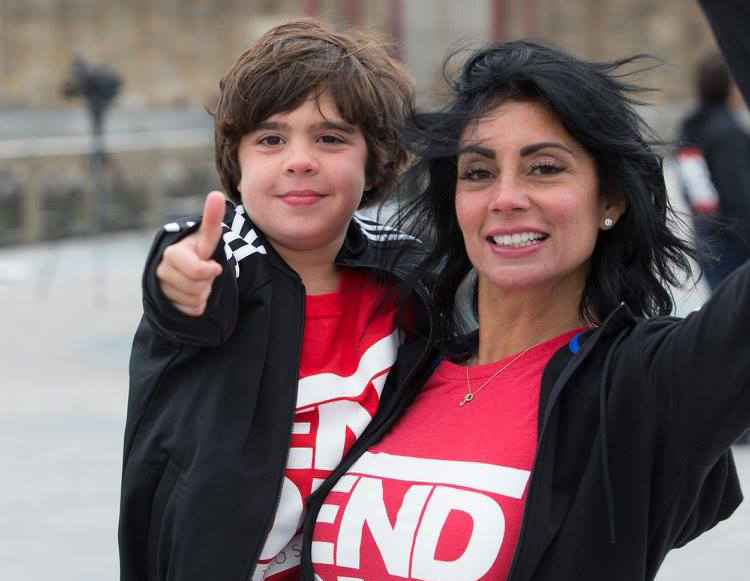BROOKLYN, NEW YORK—In 2011, just before Dayna and Manni Scarso’s son, Pietro, turned three, they discovered his body was deteriorating from the inside out.
The Scarsos began suspecting problems when they noticed Pietro’s younger brother, Nico, running up and down stairs while Pietro made slow, valiant attempts, but would then get stuck. Looking back, Manni remembered initially thinking, “maybe Pietro’s just lazy and not the most athletic kid,” but the frequency in his falls indicated it was something far more serious.
A year later Pietro was diagnosed with Duchenne muscular dystrophy, a rare, incurable disease that each year affects one out of 3,600 boys worldwide. There were no medical options, the Scarsos suddenly faced the reality that Pietro would be in a fight for his life, for the rest of his life.
In their desperation, the Scarsos shifted their entire lives to create Pietro’s Fight, a nonprofit dedicated to funding research and clinical trials.
In September, the Scarsos’ reached a major milestone and made headlines for raising over $1 million toward receiving FDA approval for Eteplirsen, the first drug ever made available to patients with Duchenne muscular dystrophy – a drug that not only bought their son more time, but every other young boy suffering from the disease as well.

Duchenne muscular dystrophy is caused by a genetic mutation that leads to a lack of dystrophin – a protein in the body that allows for regeneration of muscle fibers.
Two in three diagnosed cases result from a pre-existing genetic condition carried by mothers. Since the Scarsos had no prior family history of the disease, Pietro’s condition was considered to be a spontaneous mutation. Dayna Scarso still remembers the months leading up to Pietro’s diagnosis.
“We had taken him to occupational therapists, physical therapists, specialists of all kinds,” said Dayna. “Most doctors told us he was just low-toned, but then one doctor was able to diagnose him on the spot, just from touching his muscles. We spent the next nine weeks waiting for his genetics tests to come back, praying for that one percent possibility of error.”
When Pietro’s results came back positive, Manni recalled, “the doctor told us to make him comfortable and that we could bring him back once he turned five for steroid treatment.” Research funding is generally prioritized for diseases that are widespread public health risks. Because Duchenne muscular dystrophy has been considered rare, research funding was only available through donations.
The Scarsos learned that patients typically lose their motor skills and muscle function from the ground up. Pietro would likely become unable to walk between the ages of eight to 12 and be wheelchair-bound for the remainder of his life.
“By his late teens to early twenties, his heart or lungs could begin to fail since organs are muscles, too,” said Manni Scarso. “Most boys with Duchenne don’t live past their twenties. It was just devastating for us to think about.”
With Pietro’s deteriorating health, Manni, a private jet sales broker, began refocusing his efforts to be present for his son, while Dayna began channeling her time into creating a nonprofit.
“We didn’t know how much time we had left with him,” said Manni. “Every minute of every day counts. I was running a company that ran a backseat after this diagnosis. It just wasn’t important to me anymore. When you’re a parent and there’s a problem with your kid, the only thing you can think about is how you’re going to fix it.”
The Scarsos have devoted the past five years to Pietro’s Fight. As the family attended countless medical consultations spanning across Iowa, Florida, California and Pennsylvania, they began partnering with families in parallel situations forming the Duchenne Alliance – a community to fund research and clinical trials of new drugs.
“When we saw what other families were doing, we knew we couldn’t just sit back and do nothing,” said Dayna. “We knew we had to fight.”
In 2015, the Scarsos learned of a trial conducted by the drug company – Sarepta Therapeutics, which was looking to expand the demographic of its subjects to include young boys in a 96-week trial. After a series of pre-screenings, Pietro was fortunate enough to be among the 20 young boys selected.
There are 78 potential genes that can malfunction to cause Duchenne muscular dystrophy. This experimental drug was aimed at slowing down the disease by supplementing one of Pietro’s missing dystrophin genes.
The Scarsos moved from New York City to Los Angeles in between school seasons for Pietro to receive injections and then continued treatments in Philadelphia each week.
Though Pietro still lacked physical strength, it was through his new drug regimen that allowed him to prove his mental endurance. With each blood test and intravenous injection, Pietro would grip on to his parents’ hands and sit through his appointments without a single complaint.
Within the first 16 weeks of taking the drug, the Scarsos watched Pietro’s stamina increase and shift his physical disposition. By the 63rd week, his positive results played a major role in receiving FDA approval to release the drug onto the market, a decision that would further the development of research for other strains of muscular dystrophy.
“The day I picked Pietro up from school, I told him ‘Babe, the drug was approved!’ and he smiled and said ‘so now all the other boys can get it, too?’ This is a huge victory for the whole community and really proves that what you do matters.”
Over the next 10 years, Dr. Kathryn Wagner, Pietro’s doctor predicts that “the cure could lie within stem-cell research,” but with the approval of Eteplirsen, the odds of finding an answer will be more feasible.
“We hope that one day this will be a thing of the past,” said Dayna. “This disease steals time from us, but because of this drug, we are given a greater chance to keep our boys. It will give patients with Duchenne a fighting chance at a normal life.”
In late September, the Scarsos hosted a 5K run in Brooklyn at the Veteran’s Memorial Pier to celebrate the accomplishment they had fought so hard for. In between hug-breaks and high-fives, Pietro could be seen off in the distance smiling and running alongside his friends on the racetrack, a sight the Scarsos once believed they’d never see.
“Everyone in their life should witness a miracle,” said Samantha Altilio, executive director of Pietro’s Fight. “Pietro’s not only mine and his family’s, but he’s the community’s miracle.”







